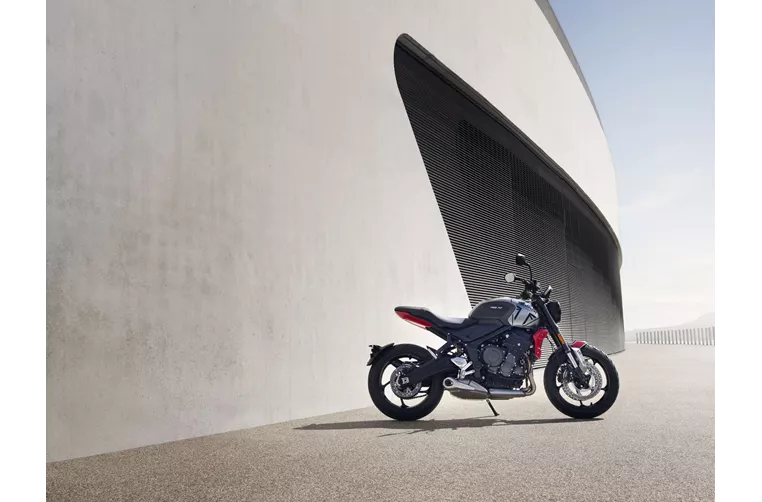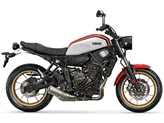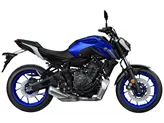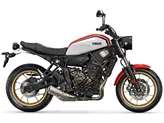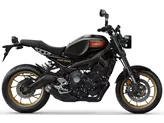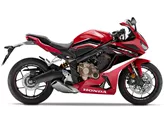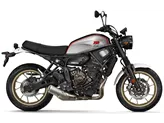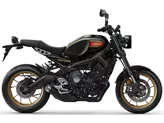Yamaha XSR700 2015 vs. Triumph Trident 660 2021

Yamaha XSR700 2015
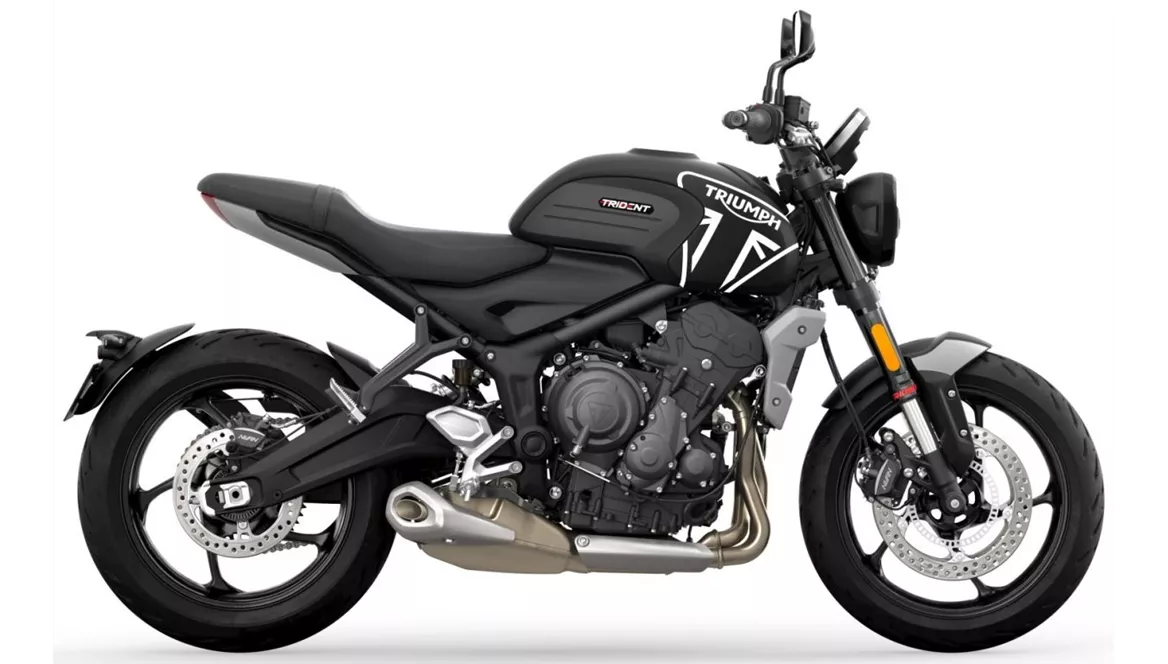
Triumph Trident 660 2021
Overview - Yamaha XSR700 2015 vs Triumph Trident 660 2021
The Yamaha XSR700 model year 2015 and the Triumph Trident 660 model year 2021 are both naked bikes with similar engine types, fuel systems, and cooling systems. However, there are several differences between the two models.
In terms of engine power, the Triumph Trident 660 has a slight advantage with 81 HP compared to the Yamaha XSR700's 75 HP. However, the Yamaha XSR700 has a higher torque rating of 68 Nm compared to the Trident's 64 Nm. Both bikes have fuel injection systems and 3-cylinder engines, but the Yamaha XSR700 has a larger displacement of 689 ccm compared to the Trident's 660 ccm.
In terms of suspension, the Yamaha XSR700 features a telescopic fork front suspension and a swing arm rear suspension with a monoshock absorber. The Triumph Trident 660 also has a swing arm rear suspension with a monoshock absorber, but it features an upside-down telescopic fork front suspension, which may provide better performance and handling.
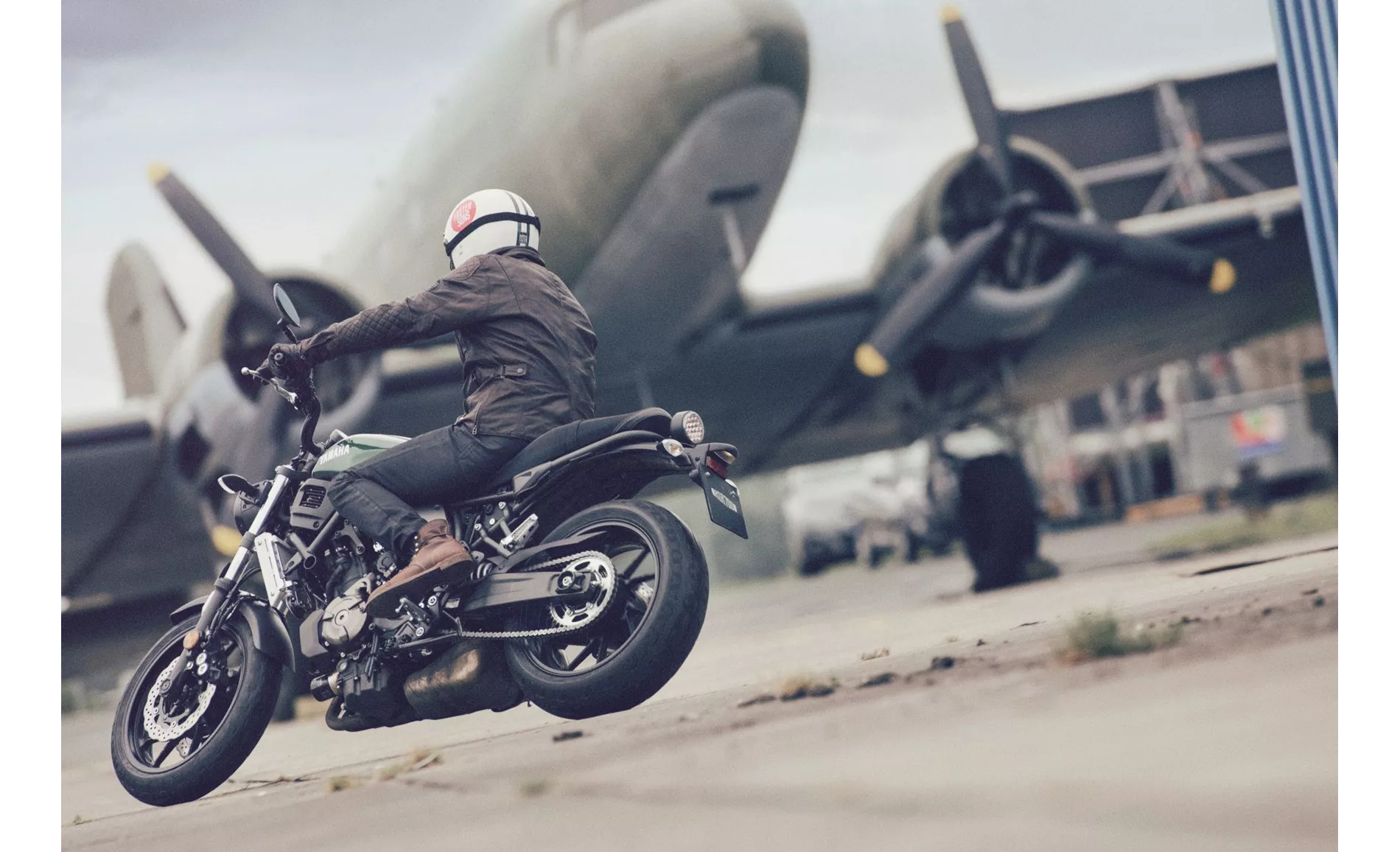
Yamaha XSR700 2015
Both bikes have steel frames and double disk front brakes, but there are some differences in the specifications. The Yamaha XSR700 has a front brake diameter of 282 mm with four pistons, while the Triumph Trident 660 has a larger front brake diameter of 310 mm with double pistons. This suggests that the Trident may have better braking performance.
In terms of advanced rider assistance systems, the Yamaha XSR700 only has ABS, while the Triumph Trident 660 offers ABS, riding modes, and traction control. This means that the Trident has more advanced electronic features that can enhance safety and performance.
In terms of dimensions and weights, both bikes have the same front and rear tire widths and diameters. The Yamaha XSR700 has a slightly longer wheelbase of 1405 mm compared to the Trident's 1401 mm. The seat height of the Trident is also slightly lower at 805 mm compared to the XSR700's 815 mm. In terms of weight, the Triumph Trident 660 is slightly heavier with a kerb weight of 189 kg compared to the XSR700's 186 kg.
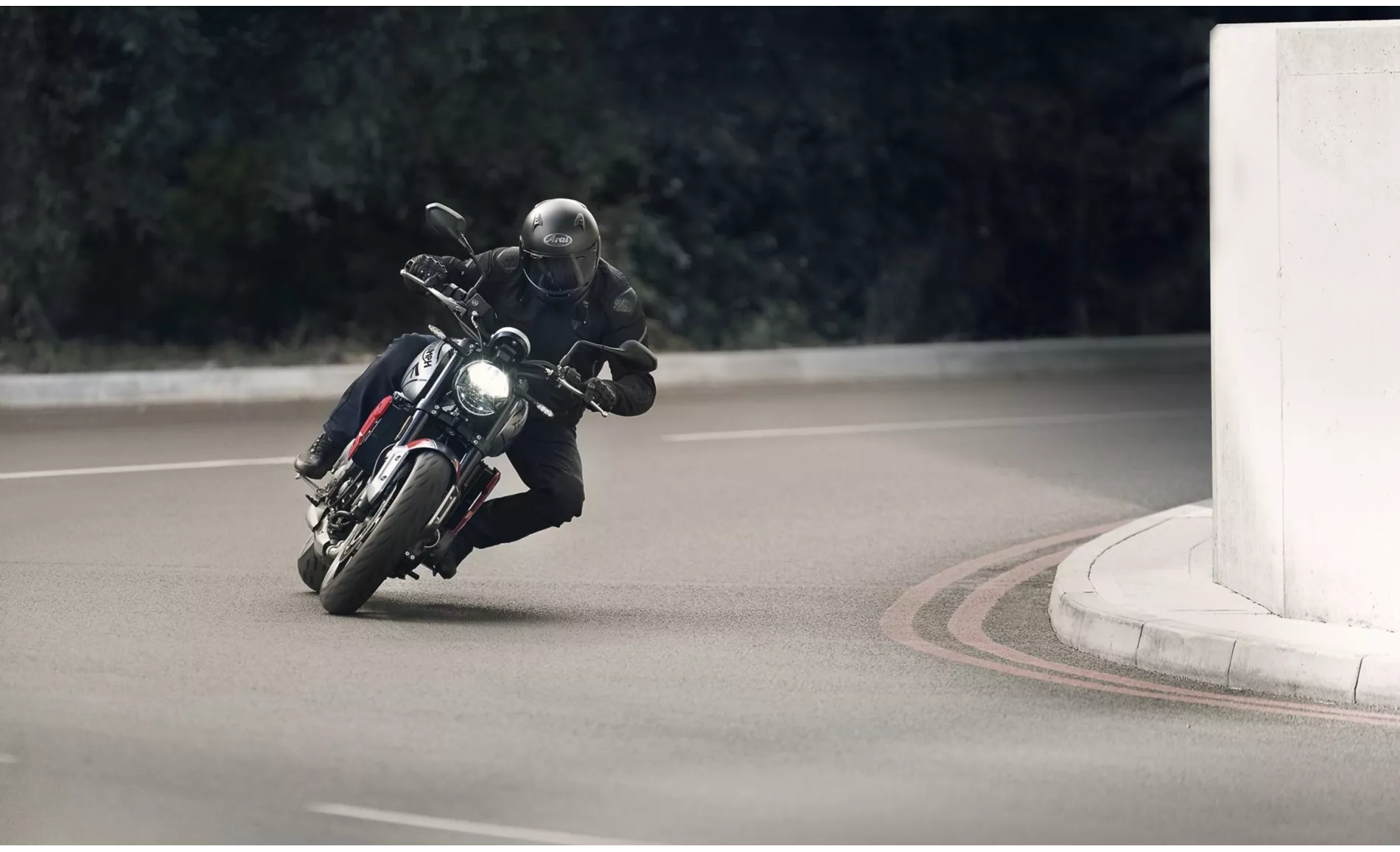
Triumph Trident 660 2021
When it comes to strengths, the Yamaha XSR700 2015 is praised for its agile engine, comfortable yet sporty chassis, comfortable upright seating position, cool retro look, complete instrumentation, good brakes, and the availability of many accessories. On the other hand, the Triumph Trident 660 2021 is praised for its powerful three-cylinder powerplant, surprisingly good chassis and brakes for this class, extensive electronic equipment, optional quickshifter with blipper, and simple and accessible controls.
However, the Yamaha XSR700 2015 has some weaknesses, including suspension that may be too soft for extremely sporty riding, a digital rev counter that is difficult to read, and a higher price compared to the basic MT-07. The Triumph Trident 660 2021 has a weakness in its traction control, which is considered to be overall very defensive.
In conclusion, while both the Yamaha XSR700 2015 and the Triumph Trident 660 2021 are capable naked bikes, the Trident offers some advantages in terms of engine power, braking performance, and advanced rider assistance systems. However, the XSR700 has its own strengths, such as its comfortable yet sporty chassis and retro look. Ultimately, the choice between the two models will depend on the rider's preferences and priorities.
Technical Specifications Yamaha XSR700 2015 compared to Triumph Trident 660 2021
Pros and Cons in comparison
Pros and Cons in comparison
Yamaha XSR700 2015

With the XSR700, Yamaha has once again hit the jackpot. The retro look with modern elements is currently very popular with customers. The fact that it is based on the affordable MT-07 is not at all a problem, as the entry-level bike is known for being extremely sporty and agile. The XSR700's comfortable chassis and upright riding position are a perfect match. The price of almost 9,000 euros seems steep at first glance, especially in comparison to the MT-07, but the improved appearance and exclusivity make up for the money.
Triumph Trident 660 2021

You can tell that the Trident is a new bike. Triumph has developed the necessary ingredients for the year 2021 with pinpoint accuracy. Cheeky but not intrusive sound, a lively engine and a comprehensive electronics package including quickshifter are simply fun. A casual motorbike that even experienced riders can have a lot of fun riding.
Price Comparison Avarage Market Price Yamaha XSR700 vs Triumph Trident 660
There are a few key differences between a Yamaha XSR700 2015 and a Triumph Trident 660 2021. It takes less time to sell a Triumph Trident 660 with 85 days compared to 155 days for the Yamaha XSR700. Since model year 2015 1000PS.de editors have written 26 reviews for the Yamaha XSR700 and 20 reviews for the Triumph Trident 660 since model year 2021. The first review for the Yamaha XSR700 was published on 7/22/2015 and now has more than 13,700 views. This compares to more than 76,700 views for the first review on Triumph Trident 660 published on 10/30/2020.

